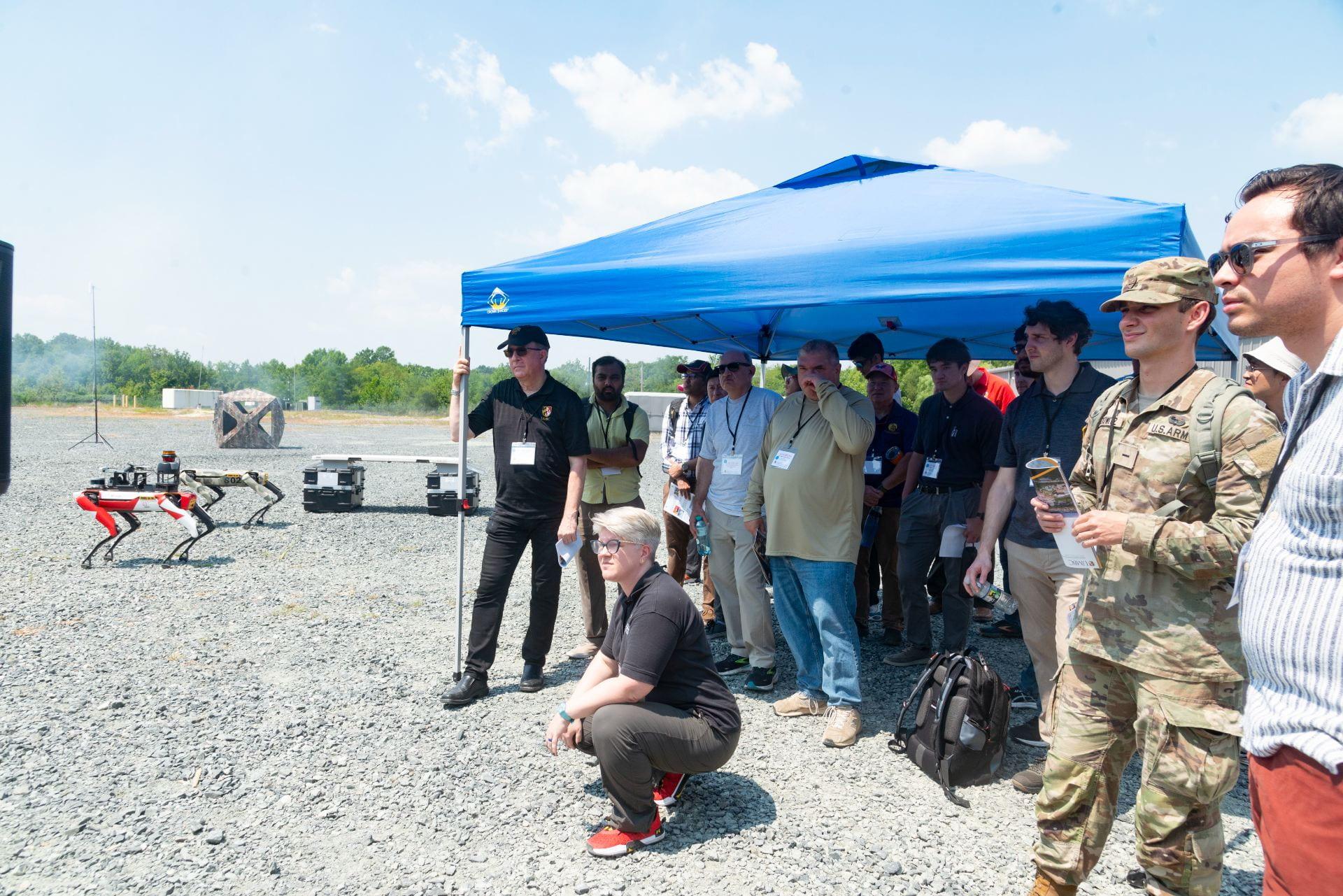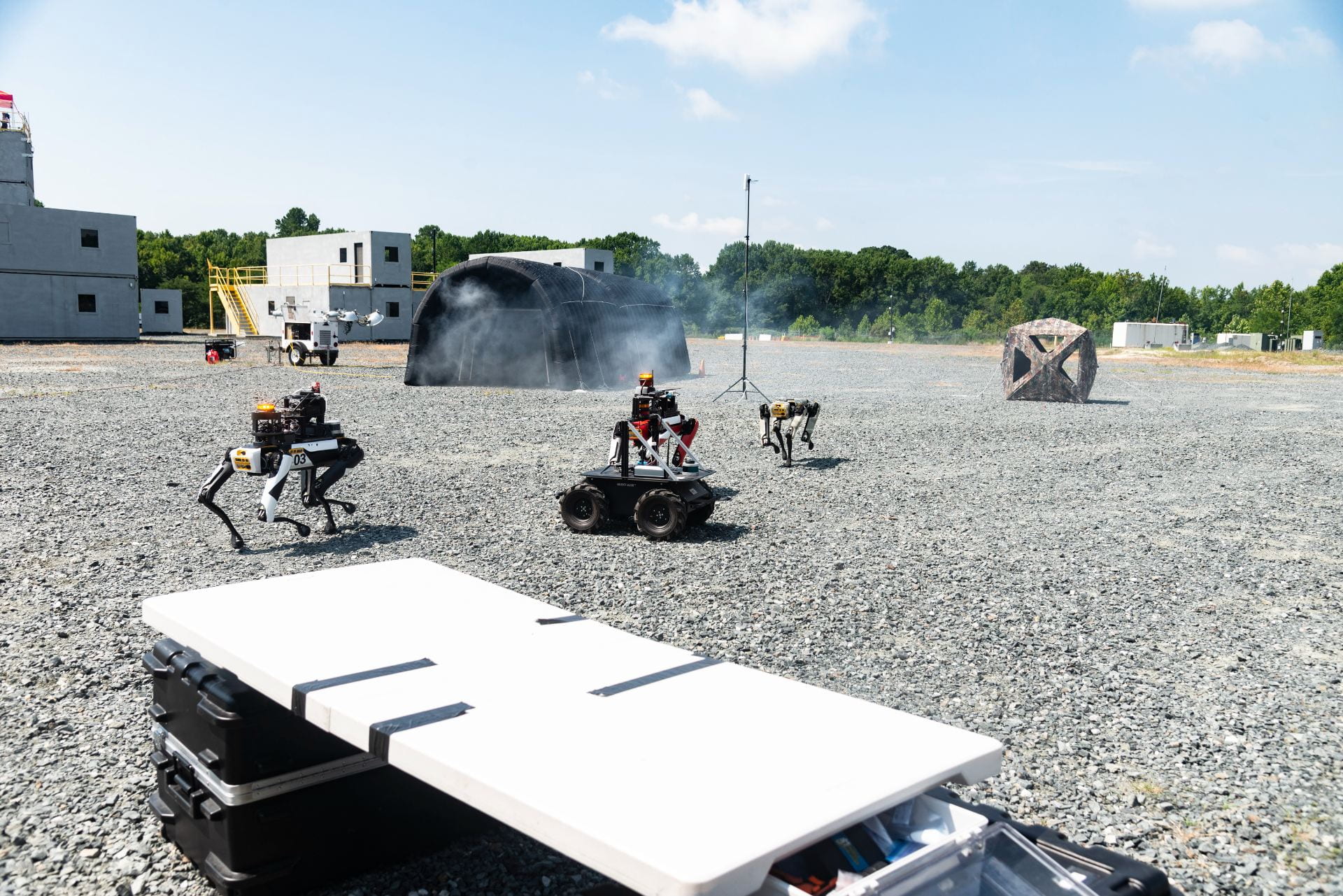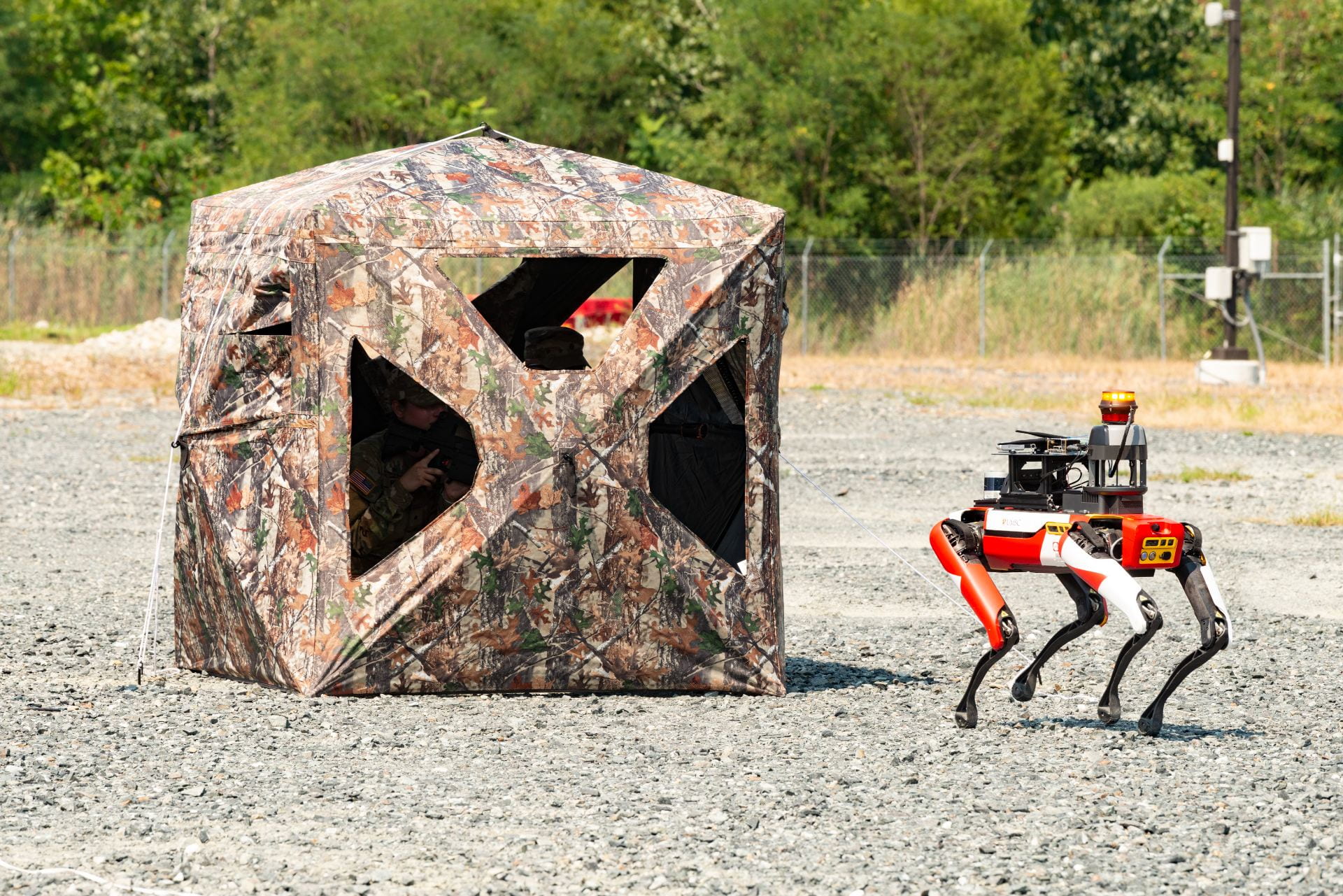
Research integrating human-machine systems is one of the core competencies driving ARLIS’s existence as a university-affiliated research center (UARC). This August the U.S. Army Combat Capabilities Development Command Army Research Laboratory (DEVCOM ARL) hosted its third set of Field Experiment events to showcase systems developed through its Artificial Intelligence and Autonomy for Multi-Agent Systems (ArtIAMAS) cooperative agreement with the University of Maryland (UMD).
ARLIS researchers, as part of UMD and University of Maryland Baltimore College (UMBC) teams on several ArtIAMAS tasks, participated in these field experiment events held at the ARL Robotics Research Collaboration Campus (R2C2) in Graces Quarters, Md. The Field Experiment event showcases ground and air autonomy prototypes as well as simulation capabilities and human-machine teaming concepts.
 At the 2024 ArtIAMAS Field Experiment, Dr. Susan G. Campbell, as lead for Human-Machine Teaming, and researcher Melissa Carraway, as a subject matter expert in human factors, participated in an experiment focused on interaction with multiple ground-based legged and wheeled robots. They worked with a team from UMBC led by Dr. Aryya Ganghopadhyay to design a scenario around using robots in low-visibility environments with ROTC cadet operators. Using operators familiar with military operations but not with robot teaming showed the potential for deploying these systems to teams without robotics expertise.
At the 2024 ArtIAMAS Field Experiment, Dr. Susan G. Campbell, as lead for Human-Machine Teaming, and researcher Melissa Carraway, as a subject matter expert in human factors, participated in an experiment focused on interaction with multiple ground-based legged and wheeled robots. They worked with a team from UMBC led by Dr. Aryya Ganghopadhyay to design a scenario around using robots in low-visibility environments with ROTC cadet operators. Using operators familiar with military operations but not with robot teaming showed the potential for deploying these systems to teams without robotics expertise.
Researchers Jacob Bunker and Dr. Steven C. Howell showcased their new Cloud Simulation Platform alongside UMD researchers working on a simulation suite called the Iteration Tool. On its own, the Iteration Tool simplifies the process for researchers to adjust settings for iterative simulation tests on a local computer. Since last year’s experiment, the Iteration Tool team and Cloud Simulation Platform teams have worked together to connect their platforms to allow users to run multiple tests at the same time using cloud computing, speeding up the process. Going forward, these teams are working to integrate both ground and aerial vehicles in the same simulation – a technical challenge given incompatibilities in the two simulation architectures.
The ArtIAMAS field experiments were also an opportunity for ARLIS intern Nadia Meyerovich to share findings from ArtIAMAS work done as part of this year’s Research for Intelligence and Security Challenges (RISC) summer internship program. Along with fellow intern Kevin Pham, she created a system that quickly turns 2D images of real objects into 3D digital models. This innovation saves researchers from having to either buy expensive 3D models or create them by hand, which can be a difficult and time-consuming task.
ArtIAMAS is a cooperative agreement between the Army Research Laboratory and UMD aimed at improving technology in robotics and smart devices. The goal is to develop systems where robots and other smart devices work well together and with humans in various settings. ArtIAMAS seeks to accelerate the use of these technologies in real-world situations, especially in challenging environments where multiple systems need to work together effectively.
UMD ArtIAMAS activities are led by Derek Paley of the Maryland Robotics Center and involve faculty from ARLIS along with other units across campus including Computer Science, the College of Information and the College of Engineering.

